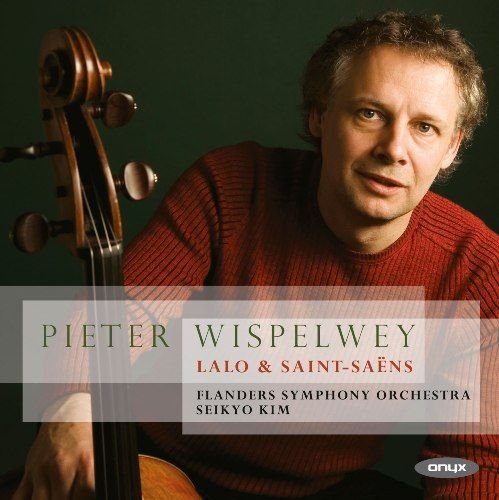Pieter Wispelwey, Flanders Symphony Orchestra, Seikyo Kim - Édouard Lalo, Camille Saint-Saëns - Cello Concertos (2013)

Artist: Pieter Wispelwey, Flanders Symphony Orchestra, Seikyo Kim
Title: Édouard Lalo, Camille Saint-Saëns - Cello Concertos
Year Of Release: 2013
Label: Onyx Classics
Genre: Classical
Quality: FLAC (image+.cue,log,scans)
Total Time: 63:32
Total Size: 325 Mb
WebSite: Album Preview
Tracklist: Title: Édouard Lalo, Camille Saint-Saëns - Cello Concertos
Year Of Release: 2013
Label: Onyx Classics
Genre: Classical
Quality: FLAC (image+.cue,log,scans)
Total Time: 63:32
Total Size: 325 Mb
WebSite: Album Preview
Édouard Lalo (1823-1892)
[1]-[3] Cello Concerto in D minor
Hector Berlioz (1803-1869)
[4] Romèo et Juliette - Love Scene
Camille Saint-Saëns (1835-1921)
[5]-[7] Cello Concerto No.2 in D minor, Op. 119
Performers:
Pieter Wispelwey cello
Flanders Symphony Orchestra
Seikyo Kim conductor
In the context of the modern concert repertory, the two works on this album have languished in the shadow of two better-known chestnuts: Édouard Lalo's Symphonie espagnole for violin and orchestra is much more common than the Cello Concerto in D minor heard here, and Camille Saint-Saëns' Cello Concerto No. 2 in D minor, Op. 119, technically dense and knotty, is sparsely programmed in comparison with the brilliant Cello Concerto No. 1 in A minor, Op. 33. Dutch cellist Pieter Wispelwey, who can deliver idiomatic performances in an impressive range of repertoire, seems to intend to revive interest in these two works. He's more successful in the Lalo, where he digs into the tense, tragic opening of its first movement and effectively broadens the music out into a more festive mood. His technical facility in the Saint-Saëns will fascinate cello buffs, but the work has a whiff of the academic about it. The Love Scene from Berlioz's Roméo et Juliette appears between the two works as a kind of entr'acte. It's harmonically in the same universe as the two concertos, but it adds little to the program beyond length; one awaits the time when programs are assembled logically, without the imperative to top out at over an hour, which wasn't even a possibility until the late 1980s within the confines of a single disc. In general this is a completely competent performance of two works that have fallen out the cellist's canon, which really is not so large that it can afford to exclude such often lovely music.
DOWNLOAD LINKS





![Ben Aylon, Roei Hermon - SMALL ROOM IN DAKAR (2025) [Hi-Res] Ben Aylon, Roei Hermon - SMALL ROOM IN DAKAR (2025) [Hi-Res]](https://www.dibpic.com/uploads/posts/2025-12/1765640683_pl8lfacmwajwc_600.jpg)
![Wadada Leo Smith - Divine Love (1979/2025) [Hi-Res] Wadada Leo Smith - Divine Love (1979/2025) [Hi-Res]](https://www.dibpic.com/uploads/posts/2025-12/1765802240_cover.jpg)

